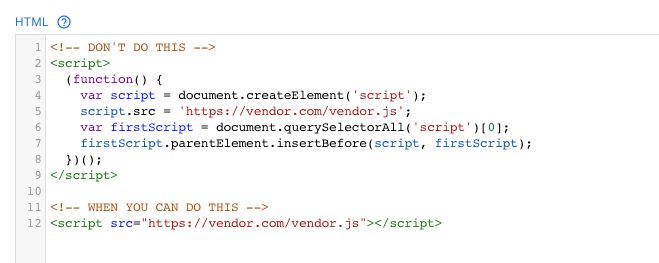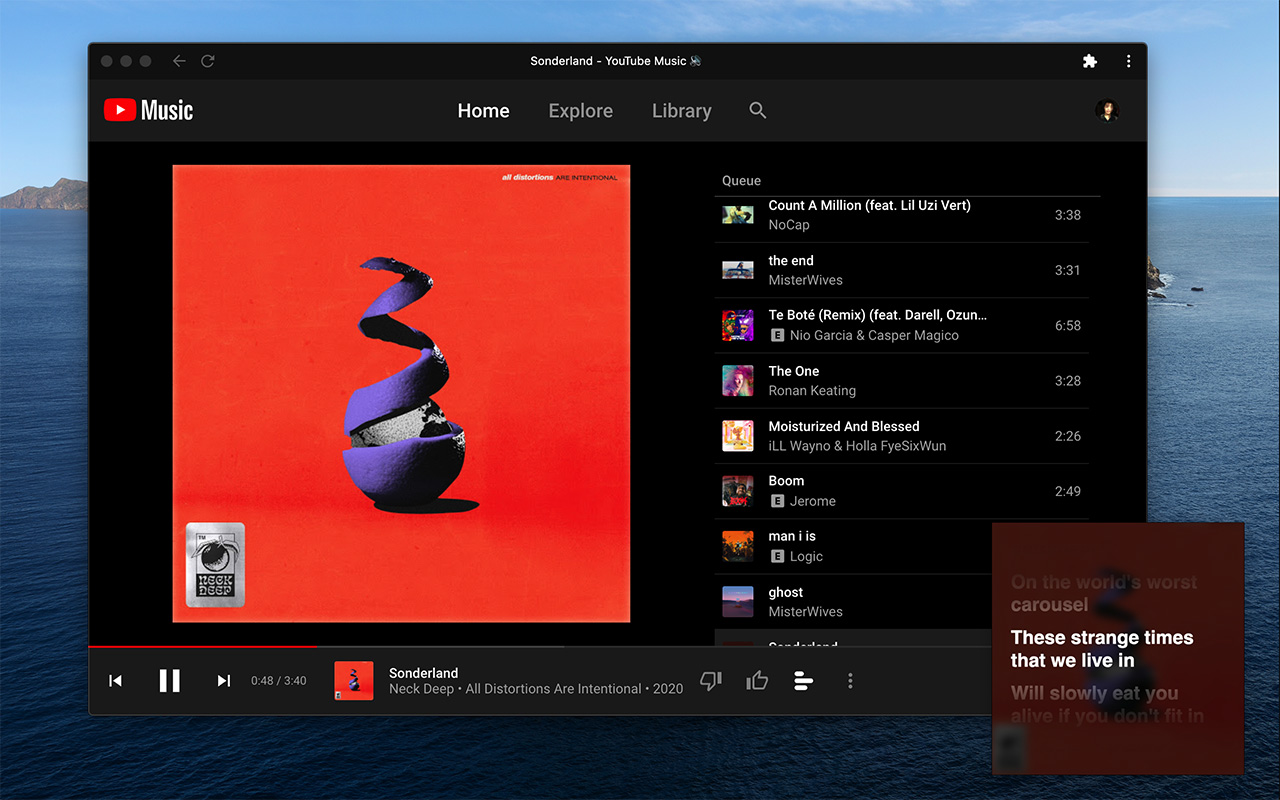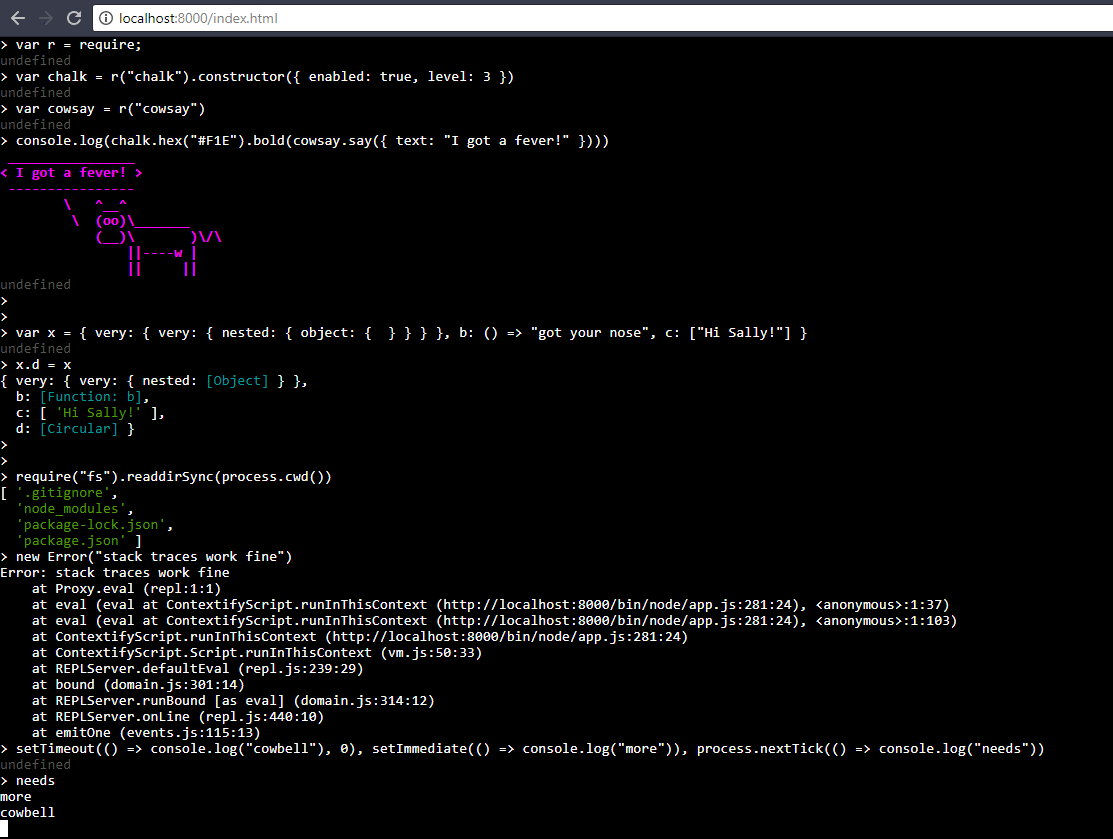

- JAVASCRIPT RUN AS SOON AS ELEMENT RENDERS HOW TO
- JAVASCRIPT RUN AS SOON AS ELEMENT RENDERS UPDATE
- JAVASCRIPT RUN AS SOON AS ELEMENT RENDERS CODE
Ībove approach will surly work but you can try the below code also. We usually write document.ready() function which usually gets called immediately after DOM elements is ready.īy using jQuery and JavaScript, we will be able to resolve the issue. Our requirement is to run the code after the page has loaded. Once the whole page finished loading you will be able to access images everything. There is a difference between DOM is ready and when the whole page finished loading. Run JavaScript after page loaded completely using jQuery
JAVASCRIPT RUN AS SOON AS ELEMENT RENDERS HOW TO
We will discuss how to run JavaScript using jQuery after page load. This thing we were trying inside a SharePoint web part page, where we were adding the code using a script editor web part. Recently in one of the assignments, I wanted to call a JavaScript function after the page fully loaded. However calling scope.$apply() will start digest cycle again, which will cause paint.ng and painted.ng to be triggered again on the next frame.This jQuery tutorial, we will discuss how to run javascript only after the entire page has been loaded using jQuery. If you make any changes in the scope at that time you will have to call scope.$apply(). in javascript) and thus, the user agent can continue parsing and rendering. Just remember that paint.ng and painted.ng events are triggered after digest cycle is finished. Scripts that appear within a SCRIPT element are executed when the document. This was a simplified example of usage in javascript outside angular app, but you can use same code in your angular app too. Var subscription = source.subscribe( x => I used the Rxjs Observable timer to do this. I think what you want here is a way to asynchronously add a function with custom code to the end of Ionic's (or Angular's) processing queue. Just after my $evalAsync()ed function executed. Manipulations, and thus I have no guarantee my DOM tree won't be modified So if I get it correctly, my $evalAsync()ed code run before DOM

JAVASCRIPT RUN AS SOON AS ELEMENT RENDERS UPDATE
And all widgets/directives use $watch to update DOM nodes. The $asyncEval is exactly what you want as the current DOM update hasĦ Konstantin Stepanov I looked through code and what I found out, $evalAsync just queuesĬode for execution, and then it's executed in $digest, but there in $digestįirst execution queue (filled with $evalAsync) is run, and then watchersĪre evaluated. Those animations need to be triggered from within directives, in which case Trying to solve? If you just want to apply special animations to do, then So in order for us to help you, what is the specific problem which you are Makes it hard to have clear line in a send as to where the DOM update Which can than modify the model which then causes more DOM updates. Since angular has concept of directives,Ī directive may unroll a loop, which can the instantiate a controller, Very clear where the beggining and end of render is. Rendered into a string which then gets innerHTML. The issue is that most frameworks have a string template which then gets

If you enqueue from controller then it will be before, but if you enqueue Reply to this email directly or view it on GitHub: We'd prefer more robust and correct way to do it. LazyLoad (to load images in a lazy fashion), or run Facebook handlers (it'sĪ real problem for us, as Facebook XFBML parser requires already existingįb:* DOM nodes, which is difficult to guarantee with asynchronous DOMįor now we use $fer() here and there, but it's a very bad thing, Handlers binding, applying some jQuery plugins effects like Masonry, Guess after the end of digest cycle), so it's same to apply some specialĮffects to it, like drag-n-drop handling, fading in/out, custom event a lot of ng:repeat's and other ng:bind stuff is evaluated),Īnd as the result of these (potentially long) process DOM becomes stable (I if you really want to do after the browser renderĥ Konstantin Stepanov example: we load some partial with ng:view/, then this partial is I believe that is the time you want to attach the jquery plugins. The asyncEval is after the DOM construction but before the browser renders.


 0 kommentar(er)
0 kommentar(er)
